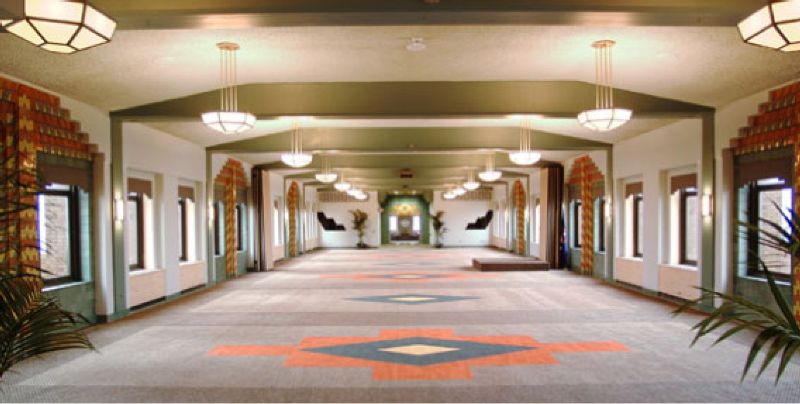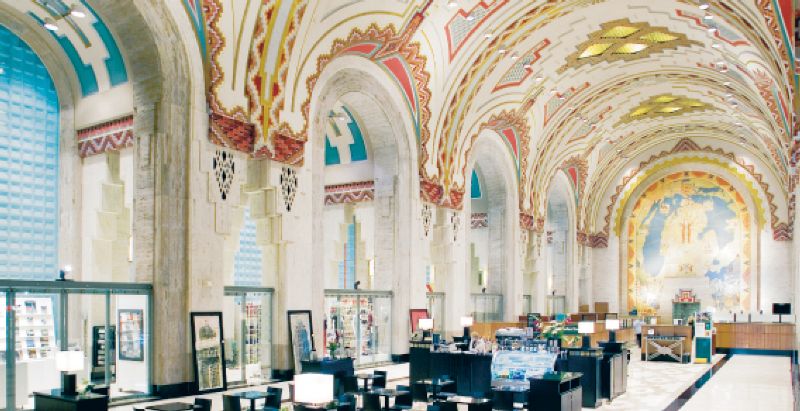
Mobile Air & Power Rentals
Indianapolis, IN 46229
Featured Project Return to Projects List
Guardian Building
Project Information
- Project Location:
- Detroit, MI
- Status:
- Completed
- Structure Type:
- Office Building
Scope Of Work
The Guardian Building has always been a defining feature of the Detroit skyline. Built in 1928-29 by the Union Trust Co., it was referred to then as the Union Trust Building or the Cathedral of Finance. Designed by noted young architect Wirt Rowland, the Guardian defies architectural categorization. It blends Aztec and Native American elements with art moderne and jazz-age influences, adding touches of Dutch, French and American arts-and-crafts design to the mix.
Built around a steel frame, the building is sheathed in two million specially made “Guardian-colored” orange terra cotta Pewabic tiles from Detroit and Atlantic terra cotta from New York State. The exterior base of the building is made of granite with carvings by famed architectural sculptor Corrado Parducci. The interior is also lavishly designed and decorated, with mosaics, Pewabic tiles, Rockwood tiles, and stained glass. The 150-ft. tall lobby features vaulted hand-painted ceilings with elements modeled after the Cathedral Nave in Beauvais, France. The building stretches 36 stories and 632 ft. from street to spire while another four stories extend underground, resulting in total area of 750,000 sq. ft.
During World War II, the Guardian Building served as the U.S Army Command Center for wartime production. In 1952, it was sold to the Guardian Building Company of Michigan National Bank. In 1975, it was sold to MichCon, then to the General Electric Pension Fund under a leaseback contract. The Sterling Group purchased the building in 2003 and invested an additional $14 million into it. On July 18, 2007, Wayne County announced an agreement to purchase the Guardian Building and relocate county offices there – at a cost of $14 million plus an additional $30 million for renovations.
High and Not-so-Dry
Wayne County hired the international real estate firm Hines as the construction manager, and in May 2009 the joint venture team of Tooles Contracting Group, LLC and Sachse Construction & Development Corp. were retained as the general contractor. The project included demolition, renovation, and upgrades of tenant improvements to approximately sixteen individual areas, plus upgrades to the existing building mechanical systems and restrooms.
The Mobile Air Force was called to the project site soon after construction began to help with building climate issues that were significantly slowing the progression of the job. The building air handler systems for floors 7, 8, 11, 12, 13 and 14 were in the process of being replaced with all-new ducting, necessitating a total shutdown of the system. In addition, each floor was under heavy construction to include fireproofing, followed by drywall and mudding, and then final finishes.
Unfortunately, there was no control of relative humidity or temperature during the initial stages of this work. As a result, valuable time was wasted waiting for fresh fireproofing to dry, drywall to be installed and mud to dry. In fact, drywall mud seams were drying at a painfully slow rate of 96 hours between coats. The crew tried to alleviate the situation by installing 60 commercial dehumidifiers throughout the construction space, but they did little good over the course of three weeks – and they took up as much as 540 sq. ft. of floor space, getting in the way of contractors. The project was falling further and further behind.
Doing More with Less
Mobile Air Force collaborated with the Mobile Dry Force to devise a solution that would reduce drywall mudding and production time, and get the project timeframe back on track. Mobile Air replaced the 60 dehumidifiers with two portable electric dry systems on each of the six floors under construction – 12 units in all.
The results were immediate and impressive. Prior to Mobile Air’s involvement, relative humidity levels reached 50% and higher. Within 24 hours of the Mobile Air solution, RH levels dropped by 50%-70%, down to an average of 25-15%. Furthermore, these levels were consistently maintained.
The fireproofing was now drying, drywall mud was ready for the next coat by the end of an eight-hour shift, and final finish times were 400% faster. The project was back on track and well under control, all with just a fraction of the equipment as before.

